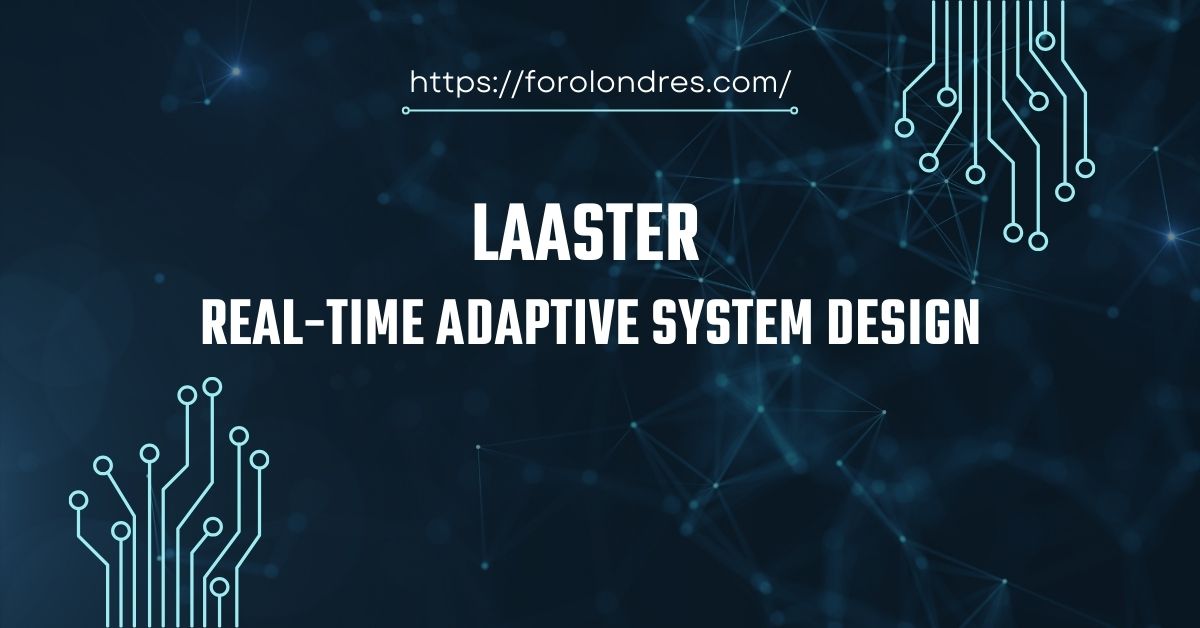Introduction to Laaster and its History
Keeping ahead in the ever-changing world of digital technology entails more than simply following trends. It’s all about rethinking the way we use platforms and services every day. Then along comes Laaster, a fresh take on system design that facilitates instantaneous adaptation to consumer demands via digital platforms. The revolutionary idea behind this term is more than simply a fad; it represents a sea change in the way we think about and interact with the internet.
By combining state-of-the-art technology with user-centric design, Laaster guarantees a smooth and tailored experience with every contact. A thorough familiarity with the history, relevance, and uses of Laaster is becoming important as businesses aim for more operational agility.
Join us as we explore this fascinating topic—unpacking its history, current uses, challenges faced by implementers, and what the future holds for this dynamic approach to system design.
Understanding the Meaning of Laaster and Its Significance
A new way of thinking about system design is embodied by Laaster. It’s not only a term; it’s a method that places an emphasis on being able to adjust in the here and now.
In its most basic form, Laaster represents responsiveness. Because of this, digital platforms may respond in real-time to anything the consumer wants or requires. Users are demanding more tailored experiences, therefore being agile is key.
In its capacity to simplify relationships, Laaster finds its value. Businesses have the opportunity to boost consumer happiness and engagement by utilizing adaptive technology.
Moreover, its state-of-the-art system architecture encourages innovation in many kinds of fields. Organizations utilize Laaster to remain ahead of the competition by anticipating trends and user behaviors, whether it’s e-commerce or social networking.
Acquiring knowledge about Laaster is not only advantageous, but crucial, in the modern, lightning-fast digital world. By embracing this idea, we may unlock new opportunities for improving the user experience and developing solutions that make a difference.
Innovative Uses of Laaster in Modern Times
The way companies communicate with their clients has been revolutionized by Laaster. Digital platforms may now react instantaneously to consumer requirements by adopting this new system design methodology. Because of this flexibility, the user experience is improved all around.
Using Laaster, e-commerce websites may monitor customer actions in real-time. They may use this information to provide customers with tailored suggestions at the exact moment they are interested.
By personalizing warnings and information updates according to individual preferences and situations, Laaster enhances patient participation in healthcare.
Adaptive learning environments that modify the delivery of information based on student performance and feedback are another example of how educational institutions have embraced this innovation.
The adaptability of Laaster is pushing the envelope across a wide range of sectors, from smart home systems that optimize energy consumption in response to occupancy patterns to gaming platforms that adapt challenges based on player activities.
Challenges and Limitations of Using Laaster
Although there are many benefits to laaster, there are also some difficulties. The difficulty of putting it into practice is one of its main drawbacks. This new method of system design may be difficult for organizations to incorporate into their current structures.
Strong infrastructure is also necessary for real-time adaptability. Such dynamic capabilities cannot be adequately supported by all platforms due to a lack of resources and technology. Users may become frustrated and performance may suffer as a result.
Furthermore, there are privacy issues associated with relying on ongoing data analysis. Concerns over the real-time personalization of user experiences may make users feel uneasy.
Consistency across numerous mediums is another difficulty. It might be challenging to ensure a smooth experience when dealing with numerous platforms. Dissatisfied customers may lose faith in the brand’s capacity to provide effective, personalized answers if they encounter such inconsistencies.
The Future of Laaster and Its Potential Impact
When it comes to the future of the digital world, Laaster is incredibly promising. This new system design approach has the potential to revolutionize platform user interaction as technology advances.
Picture a world where apps can learn and change on the go, creating a seamless experience. Customers will be more satisfied and engaged as a result of companies’ capacity to quickly adapt to their changing requirements.
Machine learning and artificial intelligence are enabling Laast-er to reach new heights. Based on their tastes, we may expect personalized content delivery that people would love.
The adaptive technologies developed by Laast-er might also have a major impact on sectors like healthcare and online retail. Users may be more loyal and satisfied as a result of personalized offerings.
Brands’ interactions with consumers may become more lively, participatory, and reactive than ever before if more companies adopt this cutting-edge paradigm. Exciting new advancements that will revolutionize our digital interactions are on the horizon.
Conclusion
In the history of digital design, the development of Laaster is a watershed point. Businesses may build responsive and extremely user-friendly platforms by utilizing its creative methodology. All sectors are seeing a change in user experiences as a result of this transition.
When businesses use Laast-er, they may quickly adapt to their audience’s shifting demands. This technique puts firms in the driver’s seat as people seek more tailored interactions.
The future of Laast-er appears limitless. It’s all about embracing flexibility in design and function, breaking free from established frameworks.
Integrating such adaptable tactics will cultivate settings where innovation and productivity coexist. Embracing these innovations has the potential to revolutionize our everyday interactions with technology, making it more focused on people than ever before.
For cutting-edge ideas and expert guidance, visit forolondres.com
FAQS
What exactly is Laaster?
Digital platforms may now react instantaneously and adapt to user demands with the aid of Laast-er, a new system design technique.
How does Laaster improve user experience?
More customized interactions are made possible by platforms that employ Laaster’s adaptive algorithms to modify their user interfaces according to each user’s activities.
What industries can benefit from adopting Laaster?
From healthcare to e-commerce, Laast-er can help improve consumer interaction and optimize procedures across many different sectors.
Are there any challenges associated with implementing Laaster?
Yes, when implementing this new system design methodology, some businesses can encounter technical difficulties or need to make substantial changes to their current infrastructure.
What does the future hold for technologies like Laaster?
In the ever-changing landscape of digital transformation, technologies such as Laast-er are poised to play a pivotal role in helping organizations achieve agility and elevate customer pleasure.

